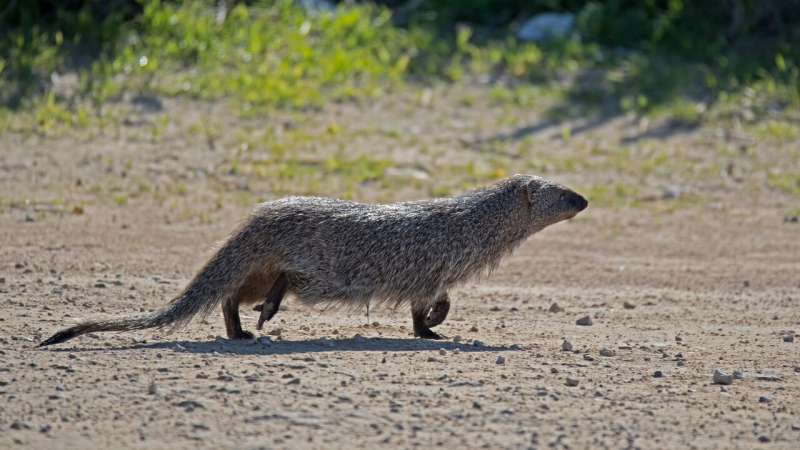Hair indicates whether wild animals were 'stressed'

While hair analysis has become routine in humans—for example for the detection of prolonged drug or medication abuse—it has been little used in animals to date. Scientists led by Alexandre Azevedo and Katarina Jewgenow of the Leibniz Institute for Zoo and Wildlife Research (Leibniz-IZW) have now demonstrated that the stress hormone cortisol is deposited in hair of wild mongooses in Portugal and determined baselines for cortisol in these carnivores. Age, sex and storage time of the samples were reflected in the cortisol values, but not the season or reproductive status of the females. It is now possible to investigate whether different habitats and changed living conditions, such as the return of the Iberian lynx, place a particular burden on the mongooses. The results were recently published in the scientific journal PLoS ONE.
Natural enemies and food competitors, but also light pollution, noise or traffic disturb wildlife. Hormones such as cortisol can, in principle, be used to detect their stress level in the blood. "Traditional methods of capturing animals and taking blood samples to measure stress in itself causes considerable stress. They also have the disadvantage that we only get a snapshot of the blood cortisol anyway," says Prof. Katarina Jewgenow, head of the Department of Reproduction Biology at Leibniz-IZW. Cortisol metabolites can also be detected in feces, which summarize cortisol levels over a time window of the past 24 to 48 hours. There is currently only one material known that can be used as a long-term archive of cortisol levels in mammals: hair.
As part of his dissertation, Leibniz-IZW doctoral student Alexandre Azevedo analyzed 294 hair samples of Egyptian mongooses (Herpestes ichneumon) from seven provinces of Portugal, where these carnivores are legally captured within the framework of wildlife management activities. The hair of the mongooses was first cut into sections, then cleaned with alcohol, pulverized and extracted with methanol. The HPLC analysis of the extracts confirmed that cortisol was deposited in the hair of mongooses during its growth. Now the scientists will be able to investigate whether it is also suitable as a biomarker for stress.
The Egyptian mongoose—which was worshiped as a holy animal by the pharaohs in ancient Egypt and therefore was also called "pharaoh rat"—is currently expanding its range in Portugal helped by abandonment of agricultural activities, rural depopulation, and climate change. However, with the reappearance of the Iberian Lynx, a long-absent natural enemy returns to the same habitat. "The very reason for our study is the reintroduction of the Iberian lynx into the wilderness in Portugal," explains Jewgenow. "The lynx's preferred prey is rabbits. The Iberian lynx is now the direct food competitor of the mongoose. We now want to investigate in a further study to what extent this puts the mongoose populations under stress. But until now there had been no suitable method."
The mongooses are a family within the Ccarnivores and originates from Africa, where they live in dry bush and grass savannahs north and south of the Sahara. Of the 34 known species, 17 are exclusively insectivores. The Egyptian mongoose is one of the largest species and much more catholic in its taste, a real meat-lover—rabbits are its main food. In addition, mice, lizards, frogs and worms are on the menu. They are also among the mongoose species that compete with and can kill snakes. For this reason, several mongoose species, including the Egyptian mongoose were introduced in various countries for "pest" control in the past. Whether it was brought to Portugal and Spain for that purpose already during classical antiquity is still debated.
More information: Alexandre Azevedo et al. Age, sex and storage time influence hair cortisol levels in a wild mammal population, PLOS ONE (2019). DOI: 10.1371/journal.pone.0221124
Provided by Forschungsverbund Berlin e.V. (FVB)


















